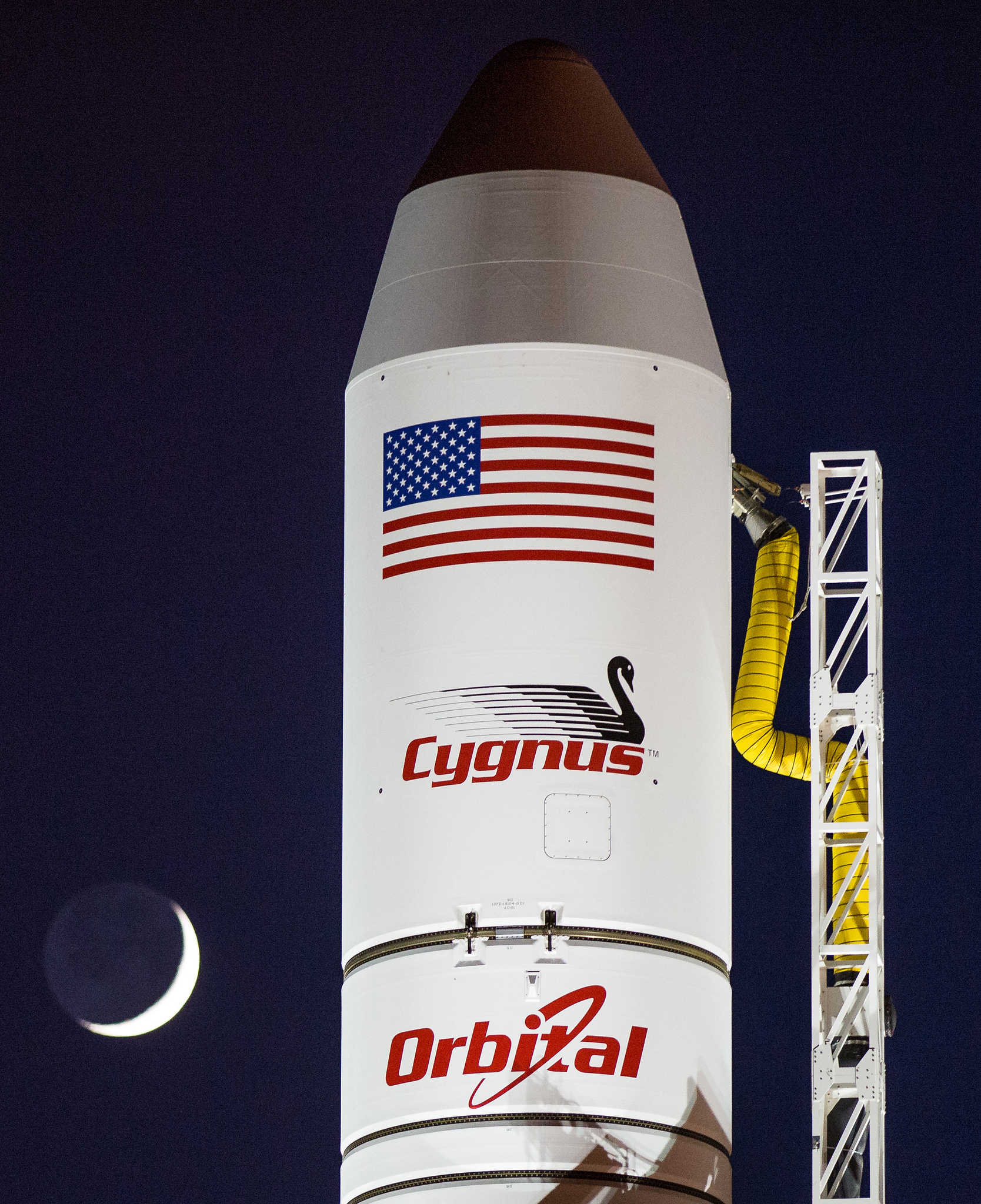RIP, Drain Brain: Science Experiments Lost in Antares Rocket Explosion

When a private rocket exploded just after launch Tuesday (Oct. 28), science experiments developed by students, professional researchers and private companies went up in smoke.
The private spaceflight company Orbital Sciences Corp.'s Antares rocket was expected to launch the company's unmanned cargo-carrying Cygnus spacecraft on a mission to the International Space Station from Wallops Flight Facility in Virginia Tuesday evening. But about 6 seconds after launch, the Antares rocket exploded, presumably destroying Cygnus' cargo, including 26 tiny Earth-observing satellites and a spacecraft built to test tech that could be used for asteroid mining. (Reportedly, no people were injured as a result of the rocket failure.)
"We do want to express our disappointment that we were not able to fulfill our obligation to the International Space Station program and deliver this load of cargo, especially to the researchers who had science on board and the people that were counting on the various hardware and components that were going to the station," Orbital Executive Vice President Frank Culbertson said during a news conference after the rocket failure. [See images of the Antares explosion]
In total, Cygnus was carrying about 4,883 lbs. (2,215 kilograms) of cargo, with about 1,603 lbs. (727 kg) of that devoted to science.
The Antares explosion destroyed the Arkyd 3 (A3) spacecraft, a small technology demonstration from the company Planetary Resources. A3 was designed as a precursor to the Arkyd 100 Series — a group of space probes that could be used to hunt for asteroids that might be mined for resources.
"As this launch failure and history have demonstrated, spaceflight is inherently risky," Planetary Resources' Stacey Tearne told Space.com via email. "The A3 is the first example of our strategy to use space as our test bed, and to tolerate failures by building success into the development path. With the A3, the Planetary Resources team achieved most of our objectives when we delivered the spacecraft to the launch integration site, and for the past few months, we have been hard at work on our next vehicle, the Arkyd 6 (A6)."
The development timeline should not be affected by the rocket failure, and the company is expecting to launch the A6 spacecraft sometime in 2015, according to Tearne.
Get the Space.com Newsletter
Breaking space news, the latest updates on rocket launches, skywatching events and more!
A fleet of 26 tiny satellites from San Francisco-based Planet Labs was destroyed during the explosion as well. After arriving at the space station, the CubeSats would have been deployed and used to observe Earth from space.
"Planet Labs understands the risks of launch," Planet Labs co-founder and CEO Will Marshall wrote of the rocket failure in an Oct. 28 blog post. "Our approach to mitigate these risks is to deploy our fleets of satellites on multiple launch vehicles, from multiple vendors. We also place more satellites in orbit than we require in each launch so that, if satellites fail in orbit, we ensure continuity."
Some of the experiments lost during the explosion would have studied astronauts' health in space. An experiment called "Drain Brain," for instance, would have gathered more data about how astronauts' blood flows in the weightlessness of the space station.
The student experiments destroyed in the Cygnus disaster were crafted to investigate a wide variety of studies as part of NASA's Student Spaceflight Experiments Program. The 18 projects included investigations into crystal growth in space, and how microgravity might affect milk's shelf life.
Editor's Note: NASA officials are urging residents of the area around the launch site to keep away from any rocket debris that might wash up on shore or be found on land. If you think you may have found pieces of the rocket, please call the incident response team at (757) 824-1295.
Follow Miriam Kramer @mirikramer and Google+. Follow us @Spacedotcom, Facebook and Google+. Original article on Space.com.
Join our Space Forums to keep talking space on the latest missions, night sky and more! And if you have a news tip, correction or comment, let us know at: community@space.com.

Miriam Kramer joined Space.com as a Staff Writer in December 2012. Since then, she has floated in weightlessness on a zero-gravity flight, felt the pull of 4-Gs in a trainer aircraft and watched rockets soar into space from Florida and Virginia. She also served as Space.com's lead space entertainment reporter, and enjoys all aspects of space news, astronomy and commercial spaceflight. Miriam has also presented space stories during live interviews with Fox News and other TV and radio outlets. She originally hails from Knoxville, Tennessee where she and her family would take trips to dark spots on the outskirts of town to watch meteor showers every year. She loves to travel and one day hopes to see the northern lights in person. Miriam is currently a space reporter with Axios, writing the Axios Space newsletter. You can follow Miriam on Twitter.









